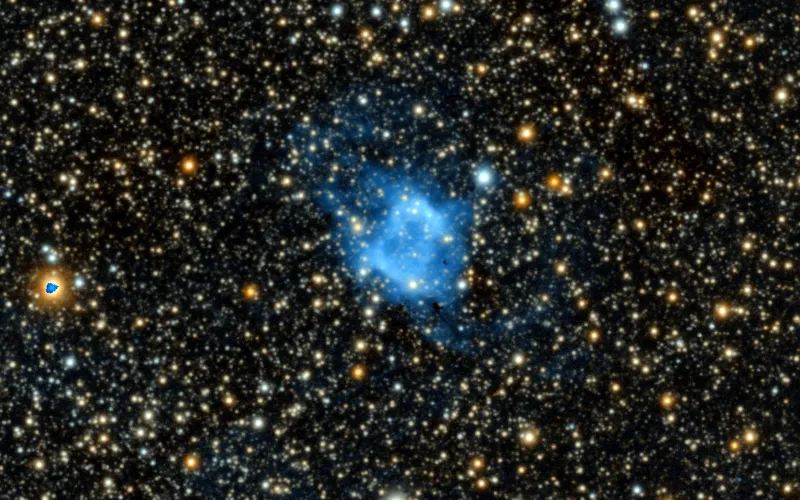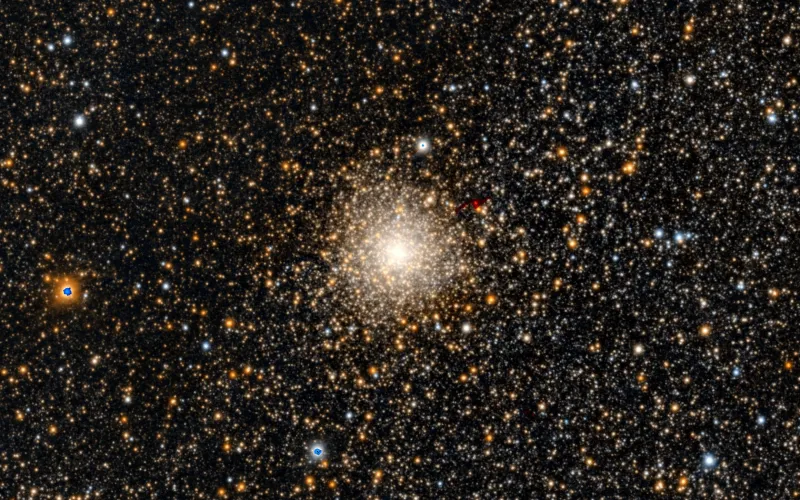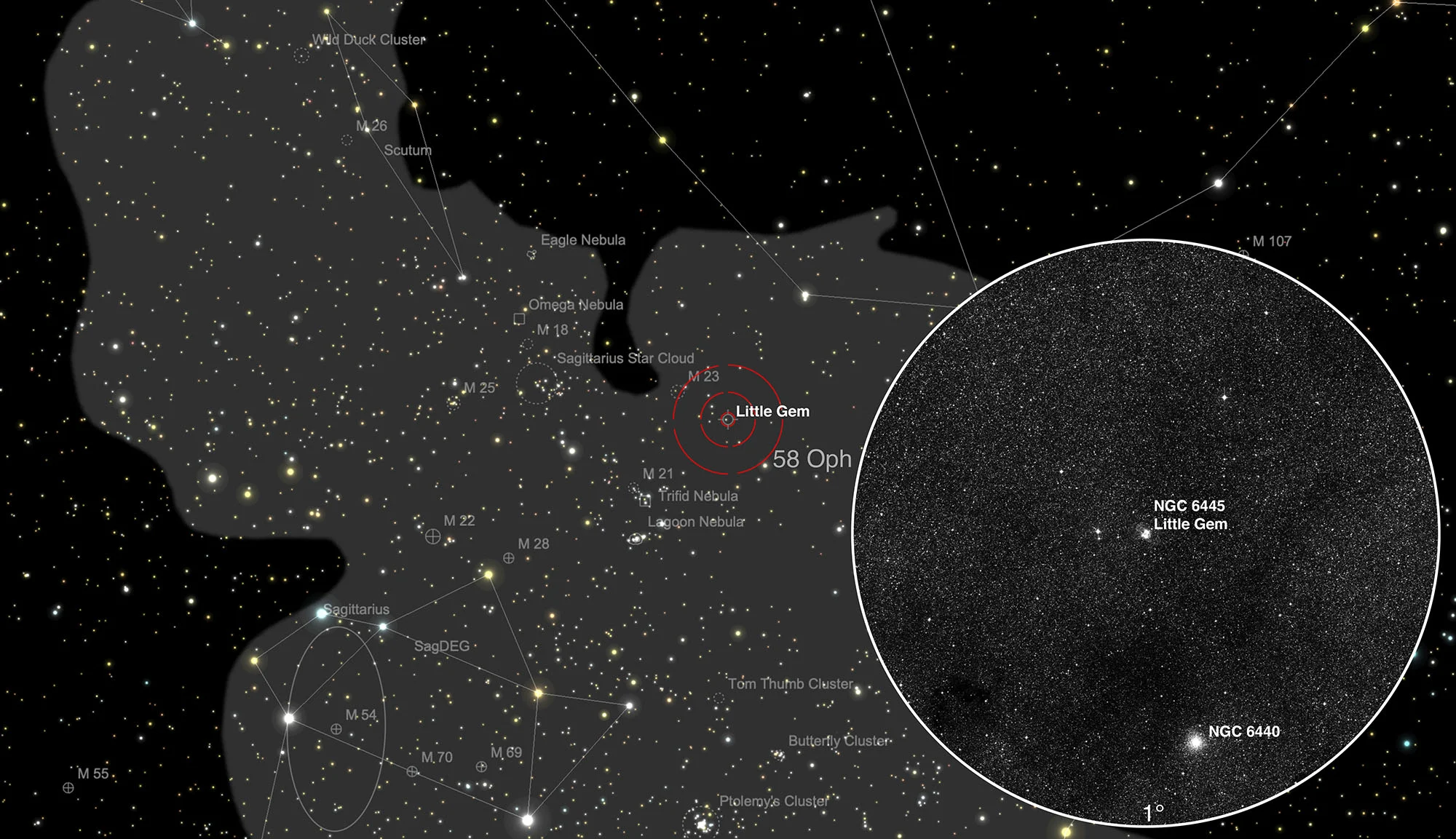Little Gem (NGC 6445) + Globular Cluster NGC 6440
History
On 28 May 1786, William Herschel discovered two nebulae, which he catalogued as I 150 and II 586. Class I stood for bright nebulae and II for faint nebulae. For I 150 (NGC 6440) he noted: «Considerably bright, round, very gradually much brighter in the middle, about 1.5' diameter.» For II 586 (NGC 6445) he noted: «pretty bright, small, irregular faint.» [464]
Planetary Nebula NGC 6445

NGC 6445 is a bipolar planetary nebula. Distances range from 1.38 kpc [153] to 2.5 kpc [141]. Surrounding the nebula is a fine halo, whose filaments are visible far out on H-II images. [152]
NGC 6445 is sometimes called the «Little Gem Nebula», a name also used for the planetary nebula NGC 6818. The name «Crescent Nebula» is also sometimes encountered, but this name is more common for the galactic nebulaNGC 6888. One can also find «Box Nebula» for this, but NGC 6309 is more commonly known by this name.
| Designations | PN G008.0+03.9: NGC 6445, PK 8+03.1, ARO 67, He 2- 290, Sa 2-248, ESO 589-09, VV 118, VV' 260 |
| Right Ascension (J2000.0) | 17h 49m 15s |
| Declination (J2000.0) | -20° 00' 34" |
| Dimensions | 33." (optical), > 34." (radio) |
| Distance | 2.5 kpc |
| Radial Velocity | +16.2 ± 0.5 km/s |
| Expansion Velocity | 38.0 (O-III) km/s |
| C-Star Designations | AG82 266, CSI -20 -17462, HD 161944 |
| C-Star Magnitude | B: 19.04, V: 19.00 |
| C-Star Spectral Type | Contin. |
| Discoverer | PICKERING 1882 |
Globular Cluster NGC 6440

According to Simbad, NGC 6440 is moving towards us at 69 km/s. A distance measurement is not given. [145]
| Designation | NGC 6440 |
| Type | GCL (V) |
| Right Ascension (J2000.0) | 17h 48m 52.6s |
| Declination (J2000.0) | -20° 21' 32" |
| Diameter | 4.4 arcmin |
| Visual magnitude | 9.3 mag |
| Metric Distance | 8.500 kpc |
| Dreyer Description | pB, pL, R, bM |
| Identification, Remarks | GCL 77, ESO 589-SC8 |
Finder Chart
The open star cluster Messier 23 in the Sagittarius constellation leads directly to the planetary nebula NGC 6445. The southern globular star cluster NGC 6440 also serves as a further search aid. The sought-after planetary nebula is located directly west of a mag 7.5 star.

Visual Observation

350 mm aperture: A fine circle surrounds the planetary nebula NGC 6445. The cap-shaped bright spots in the north and south of the nebula are striking. The nebula smolders delicately in its inner region. It is advantageous to use a relatively high magnification, greater than 200x, so that the shape of the planetary nebula is also fully revealed. [192]